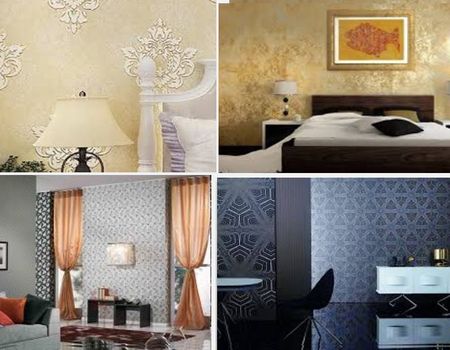Wallpaper on the walls is always a beautiful and cozy view of our houses and apartments. It is not surprising that when you are on the verge of repairs in your home, the question of which wallpaper to prefer becomes the most important. In the modern market of finishing materials, you can see a variety of types of wallpaper - of any price category and for every taste. The so-called texture or fabric wallpapers look especially luxurious, striking with the splendor of patterns, textures and the beauty of colors. Everything is united by one undoubted advantage: they give the room in which they are glued a rich and representative look. Consider in detail textile wallpaper, advantages and disadvantages.
I invite you to the group on Subscribe.ru:
APARTMENT REPAIR, USEFUL TIPS, HOME AND FAMILY
Textile wallpapers
The variety of fabric wallpapers on offer makes it easy to choose the one that best matches your home furniture and carpets. There is no such interior that would not benefit from their presence. Silk, felt and velor wallpapers look especially chic. Even the most modest rooms decorated with them take on a royal look.
The manufacturing technology of textile wallpaper is quite complicated. First, a fabric is made from textile material. Linen, felt, silk or jute can serve as raw materials for it. Then a base is applied to the canvas: paper, interlining or other synthetics. After this operation, the resulting fabric "sandwich" is sent for a long time to dry in a specially equipped chamber, with infrared radiation. The resulting wallpaper has a whole list of advantages and certain disadvantages.
By the way, we already have some knowledge.
Advantages of textured wallpapers
Perhaps the greatest advantage of textile wallpapers is their versatility, which allows them to be used to decorate rooms of various types. Equally important is the fact that when using them, joints are almost imperceptible on the walls, and any unevenness of the walls is completely hidden.
Textile wallpapers are produced mainly, which eliminates the risk of allergic reactions. They do not accumulate dampness, and therefore it will always be dry in a room covered with fabric wallpaper. The naturalness of the raw materials used in the manufacture of such wallpapers determines their heat-saving effect. Depending on the material used, this type of wallpaper can have disinfectant and soundproofing properties.
 textile wallpaper in the interior
textile wallpaper in the interior Disadvantages of textured wallpapers
First of all, this is the high price of such wallpapers, which is why not everyone can afford them. Textured wallpapers have a fabric base, and therefore have certain static properties. In other words, over time, such wallpapers are able to accumulate a lot of dust in themselves. In addition, they are susceptible to odors and are afraid of water, from which stains and stains remain on their surface. They do not like fabric wallpapers and the sun, in the rays of which they burn out, losing their luxurious look. Their hydrophobia leads to the fact that.
Pasting the walls with such wallpaper is also not at all easy. It is necessary to carefully monitor that glue does not drip onto their surface, otherwise a stain is guaranteed that cannot be eliminated. Fabric wallpapers are capricious and require a lot of attention, and therefore it is not advisable to paste them over the kitchen, hallway or children's room.
Of course, you can use a simple one, but still today wallpaper is mainly used.